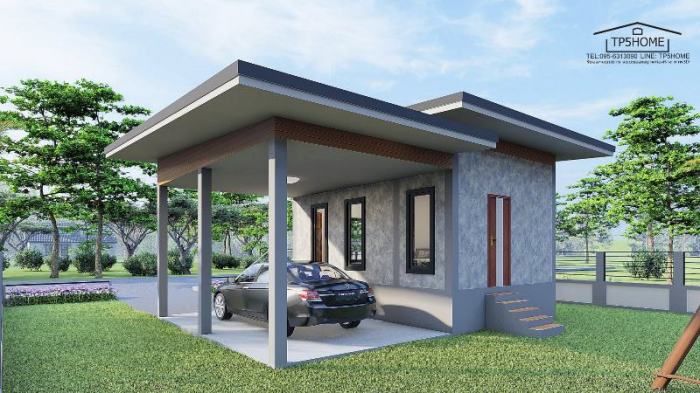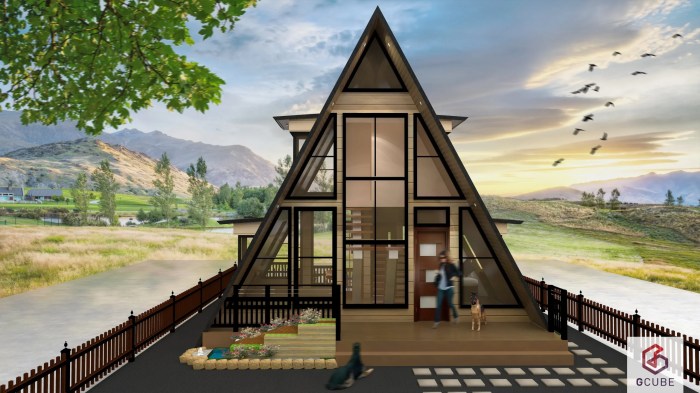Rest House Design in the Philippines
Interior Design Elements

Rest house design in philippines – The interior design of a Philippine rest house often reflects a blend of traditional Filipino aesthetics and modern comforts, creating a space that is both inviting and relaxing. The design aims to capture the essence of Filipino hospitality while providing a comfortable and functional space for relaxation and recreation. This is achieved through a careful selection of furniture, décor, and the strategic use of natural elements.
Furniture and Décor
Typical furniture in a Philippine rest house often includes pieces made from rattan, bamboo, or narra wood, reflecting the country’s abundant natural resources. These materials lend a warm, natural feel to the space. Woven textiles, such as handwoven mats and colorful tapestries, add texture and visual interest. Capiz shell lamps or chandeliers provide soft, ambient lighting, creating a romantic and serene atmosphere.
Traditional Filipino artwork, such as paintings depicting rural landscapes or scenes of daily life, adds a touch of local culture. Comfortable seating arrangements, such as woven armchairs or daybeds, encourage relaxation and socializing. The overall aesthetic often leans towards a relaxed, informal elegance.
Incorporation of Natural Light and Ventilation
Natural light and ventilation are crucial elements in Philippine rest house design. The tropical climate necessitates designs that maximize airflow and minimize the need for artificial cooling. Large windows and open-air spaces are common features, allowing for cross-ventilation. Verandas or balconies provide shaded outdoor areas where one can relax and enjoy the natural surroundings. The use of natural materials, such as bamboo and wood, further enhances the ventilation by allowing for better air circulation.
Strategically placed windows can take advantage of prevailing breezes, minimizing the reliance on air conditioning. This approach promotes energy efficiency and creates a more pleasant and healthy living environment.
Color Palettes
The color palettes commonly used in Philippine rest house interiors often reflect the natural surroundings. Earthy tones, such as browns, greens, and beige, are frequently used to create a calming and relaxing atmosphere. These colors are often complemented by brighter accents, such as blues, yellows, or reds, inspired by the vibrant colors of tropical flowers and the sea.
The use of these colors is often subtle and understated, creating a harmonious blend of natural and vibrant hues. For example, a living room might feature beige walls, brown rattan furniture, and accents of turquoise and coral in the textiles and artwork. This creates a visually appealing and relaxing space that reflects the beauty of the Philippine landscape.
Sample Floor Plan for a Small Rest House
A small Philippine rest house could incorporate a simple, open-plan design. Imagine a single-story structure with a living area, a kitchen, a bathroom, and one or two bedrooms. The living area could feature large windows overlooking a garden, allowing for plenty of natural light and ventilation. The kitchen could be integrated into the living area, creating a seamless flow between spaces.
Locally sourced materials like bamboo and nipa would be used for flooring and some wall features. Modern amenities like a well-equipped kitchen and comfortable modern beds would be incorporated while maintaining the traditional Filipino aesthetic. The bedrooms would be simply furnished, prioritizing comfort and functionality. A small veranda or porch could extend from the living area, providing a shaded outdoor space for relaxation.
This design balances modern convenience with traditional Filipino charm, creating a welcoming and comfortable space.
Rest house design in the Philippines often prioritizes breezy, open layouts to combat the tropical climate. For those seeking a more rustic aesthetic and potentially faster construction, exploring alternative designs like pole barn house design plans could offer a unique approach. These plans can be adapted to suit the local context, resulting in a durable and charming Philippine rest house with a distinctive character.
Landscaping and Outdoor Spaces

The landscaping and outdoor spaces surrounding a Philippine rest house are integral to the overall experience, often blurring the lines between indoor and outdoor living. The design aims to create a tranquil and inviting atmosphere, reflecting the natural beauty of the Philippine archipelago and providing opportunities for relaxation and enjoyment. Careful consideration is given to both aesthetics and functionality, ensuring the spaces complement the architecture and lifestyle of the occupants.The importance of integrating the rest house with its surrounding natural environment cannot be overstated.
Philippine rest houses frequently leverage the existing landscape, minimizing disruption and maximizing the use of natural features. This approach not only enhances the aesthetic appeal but also promotes sustainability and reduces the environmental impact of construction. The design often seeks to create a harmonious blend between the built environment and the natural surroundings, resulting in a space that feels both comfortable and connected to nature.
Common Landscaping Features in Philippine Rest Houses
Common landscaping features around Philippine rest houses often include lush tropical gardens, carefully chosen to thrive in the local climate. These gardens frequently incorporate flowering plants, providing bursts of vibrant color. Water features, such as ponds or fountains, are also popular, adding a soothing element to the soundscape and creating a tranquil atmosphere. Mature trees provide shade and privacy, while pathways wind through the landscape, encouraging exploration and relaxation.
The overall effect is a carefully curated natural setting that complements the architectural style of the rest house.
Utilization of Outdoor Spaces, Rest house design in philippines
Patios and balconies are frequently used as extensions of the living space, providing areas for outdoor dining, lounging, and socializing. These spaces are often furnished with comfortable seating and may include features like built-in grills or fireplaces for cooking and entertaining. Gardens may be integrated into the design, providing a space for relaxation and contemplation, often incorporating local plants and flowers to add to the overall aesthetic.
Balconies, especially in multi-story rest houses, offer stunning views of the surrounding landscape, further enhancing the connection between the interior and exterior spaces. Covered patios offer protection from the elements, allowing for outdoor enjoyment even during inclement weather.
Native Plants Suitable for Landscaping
The selection of native plants is crucial for creating a sustainable and aesthetically pleasing landscape around a Philippine rest house. Using native species minimizes the need for excessive watering and fertilization, contributing to environmental sustainability. These plants are also better adapted to the local climate and soil conditions, ensuring their long-term health and vitality. Furthermore, utilizing indigenous flora supports local biodiversity.
- Hibiscus rosa-sinensis (Gumamela): A vibrant flowering shrub with a wide variety of colors.
- Plumeria (Kalachuchi): Known for its fragrant and beautiful flowers, often used in leis.
- Ixora (Santan): A popular flowering shrub with clusters of small, bright flowers.
- Sansevieria trifasciata (Snake Plant): A hardy and low-maintenance plant, ideal for shaded areas.
- Pandanus (Pandanus): A tropical tree with spiky leaves, often used for landscaping.
FAQ Resource: Rest House Design In Philippines
What are the typical construction timelines for a Philippine rest house?
Construction timelines vary greatly depending on the size and complexity of the project, as well as material availability and weather conditions. However, a reasonable estimate might range from 6 months to a year or more.
What are the common building materials used in Philippine rest houses?
Common materials include bamboo, nipa, hardwood (such as narra and ipil), concrete, and thatch. The choice of materials often depends on budget, regional availability, and the desired aesthetic.
How can I ensure the longevity of my rest house in a tropical climate?
Prioritize using durable, weather-resistant materials. Proper ventilation is crucial to prevent mold and mildew. Regular maintenance, including pest control and waterproofing, is also essential.
What permits and licenses are needed to build a rest house in the Philippines?
Building permits and licenses are required. Specific requirements vary by location. Consult local government offices for detailed information and necessary documentation.



















